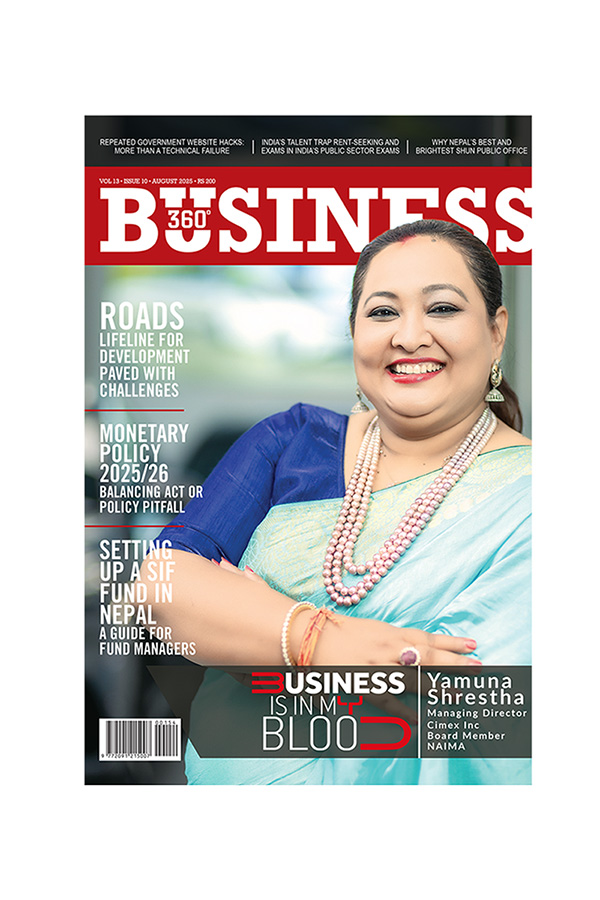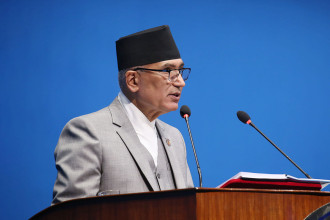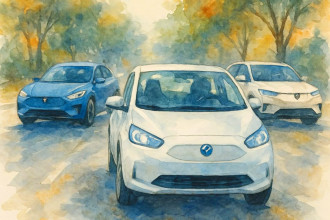
By Dibesh Dangol
A year ago, Manish Shrestha’s brother-in-law who had blood cancer was hospitalised and needed four bags of B+ blood. The family called and visited different blood banks and hospitals to no avail. It didn’t help that Manish’s brother-in-law was a blood cancer patient and they needed fresh blood for the transfusion. He contacted friends for help, collected and brought the donors to the hospital, and was finally able to get the required blood for the patient. This remains an ongoing issue as his brother-in-law requires transfusion frequently.
According to Dr. Manita Rajkarnikar, Director of Central Blood Transfusion Services, blood donation and collection may have dropped by a small margin in recent years. “Besides CBTS, there are 107 units: regional, district, emergency and hospital units in 73 districts who are involved in and have authority to organise blood donation campaigns, collect blood, and distribute it. It is a scattered system,” says Dr. Rajkarnikar.
[su_row][su_column size="1/3" center="no" class=""]
“Besides CBTS, there are 107 units: regional, district, emergency and hospital units in 73 districts who are involved in and have authority to organise blood donation campaigns, collect blood, and distribute it. It is a scattered system.”
Dr. Manita Rajkarnikar Director of Central Blood Transfusion Services
[/su_column] [su_column size="1/3" center="no" class=""]
“Hamro LifeBank came as an idea when I was talking to an Ob-Gyn friend and she shared stories of maternal deaths during childbirth due to lack of blood management.”
Rumee Singh Founder and CEO of Hamro LifeBank.
[/su_column] [su_column size="1/3" center="no" class=""]
“I saw someone post a status asking for blood and thought of opening up a Twitter account and being a source to connect blood donors and seekers.”
Arpan Shrestha iBlood, Initiator
[/su_column][/su_row]In fiscal year 2074/75, from all over Nepal, 2.62 lakh units of blood were collected and 3.45 lakh units of blood were distributed. The difference in the number of collected and distributed is because a single pint of blood can save lives of three people as a single pint of blood can be separated into red cells, platelets and plasma.
Statistics provided by CBTS show that 26.97% of population of Nepal belong to A+ blood group, 0.87% are A-, 27.88% are B+, 0.84% are B-, 29.31% are O+, 0.97% are O-, 12.74% are AB+ and 0.42% are AB-.
In Kathmandu Valley, 29.14% are A+ while 0.78% are A-, 27.61% are B+, 0.73% are B-, 27.25% are O+, 0.84% are O-, 13.10% are AB+ and 0.55% are AB-.
Besides CBTS and other blood donation program organisers, there are individuals and organisations aligned with spreading awareness regarding blood donation and bridging the gap between donors and seekers through awareness programs and technology. Blood Donors Association Nepal (BLODAN), iBlood, Get Well Soon Nepal and Hamro LifeBank are some organisations worth mentioning.
“Established in 1990, Blood Donors Association Nepal (BLODAN) is a federation of non-remunerated voluntary blood donors, donor organisations, clubs, and associations working to meet the needs for high-quality human blood and blood products by promoting regular, non-remunerated voluntary blood donation across the country,” says Er. Sanu Babu Prajapati, President. The Association conducts various voluntary contribution programs in the field of educating and motivating donors, organising donation and recognition campaigns to meet the growing demand for blood. BLODAN is associated with International Federation of Blood Donors Organisation (IFBDO), WHO, Club 25 and Nepal Red Cross Society. “We also have Dr. Arzu Rana Deuba, Madan Krishna Shrestha, Haribansha Acharya and Bhaskar Raj Karnikar as our patrons,” highlights Prajapati. BLODAN emphasises organising mid-week blood donation programs rather than on weekends to ensure availability of fresh blood through the week.

iBlood, which was initiated in 2011 by Arpan Shrestha, has been helping people in need of blood by directly contacting donors and seekers via their social media pages like Facebook and Twitter. “I saw someone post a status asking for blood and thought of opening up a Twitter account and being a source to connect blood donors and seekers.” iBlood started for people of Kathmandu primarily and people who are in need of blood can message or tag them on their social media pages.
Get Well Soon Nepal is a concept visualised and put into action in 2018 by Manoj Malakar, Prasant Jha and Saleem Thapa over a cup of coffee realising the gap that the medical sector faces in terms of technology. “After some discussions, we started talking about how each and every sector of our industry had started digitizing themselves. If someone was hungry, they had Foodmandu, if someone wanted to buy things, they had Daraz, Kaymu and Hamrobazaar. If someone wanted a ride home, they had Tootle. If someone wanted to make an online payment, they had E-sewa. Even if someone had to file a complaint against a government organisation, they had the twitter handle, HelloSarkar. However we noticed that the medical sector hadn’t been hit by the digital revolution yet,” says Malakar.
That’s how they decided to start a company that delivers medicines at the doorsteps of customers, collects blood samples and delivers the report in the comfort of their own homes, and also has a website that helps people find blood groups and potential donors they are desperately looking for in specific areas. GWS Nepal has data of thousands of people and it is available openly on their website: blood.gwsnepal.com
[su_row][su_column size="1/3" center="no" class=""]
“I contacted my friends for help, collected and brought the donors to the hospital, and was finally able to get the required blood for my brother-in-law.”
Manish Shrestha Assistant Manager-Sales, CG Mobiles
[/su_column] [su_column size="1/3" center="no" class=""]
“Even if someone had to file a complaint against a government organization, they had the twitter handle, HelloSarkar. However we noticed that the medical sector hadn’t been hit by the digital revolution yet.”
Manoj Malakar Co-founder, Get Well Soon Nepal
[/su_column] [su_column size="1/3" center="no" class=""]
“Established in 1990, Blood Donors Association Nepal (BLODAN) is a federation of non-remunerated voluntary blood donors, donor organisations, clubs, and associations working to meet the needs for high-quality human blood and blood products by promoting regular, non-remunerated voluntary blood donation across the country.”
Sanu Babu Prajapati President, Blood Donors Association Nepal
[/su_column][/su_row]A newly established non-profit, Hamro LifeBank has been gaining popularity due to their innovative idea of using technology to build an efficient blood management ecosystem and a smart blood journey. “Hamro LifeBank came as an idea when I was talking to an Ob-Gyn friend and she shared stories of maternal deaths during childbirth due to lack of blood management” says Rumee Singh, Founder and CEO of Hamro LifeBank. Having just come back after living abroad for 13 years, Singh was distraught that unlike developed countries, the onus of arranging blood in Nepal is on the patient’s family. She strongly believes that the right data and information can cut out the stress of managing blood for a patient’s family. Digitization is the first step of bringing that data and information to light. She shared, “Hamro LifeBank aims to build a data-informed approach to create a cohesive blood service to help digitize bloodbanks. On the heels of the smart city concept, we aim to create a transparent digital workflow for blood and find a solution to the growing pains of finding blood.” Hamro LifeBank’s first step started with a ‘Smart Blood Donation’ event which was held in February at Labim Mall, Lalitpur, with BLODAN’s (Blood Donors Association Nepal) partnership. Hamro LifeBank collected 205 pints of blood at the event and they also introduced their Vein-to-Vein concept in which blood donors get a text message on their mobile phone when their blood is received by the person in need of blood, informing that her blood saved a patient’s life. Singh hopes this will motivate and retain blood donors.There are many others working to bridge the gap and the intent is to create platforms that make accessibility to medical information easily available to the public via technology.
Donating blood is giving the gift of life to another person. A single pint of blood can save the lives of three people as the blood is separated into red cells, platelets and plasma. Besides, donating blood also helps improve the physical condition of the donor. It helps to reduce stress, improves emotional well-being, gets rid of unwanted blood, and lowers risk of heart diseases and cancer. Additionally, as the donor needs to go through a health screening before donating blood, the donor gets the benefit of receiving a free health check-up.
“Yet many people are afraid to donate blood for various reasons. Some of them believe that donating blood is a painful process, takes time, makes the immune system weak, donors become fat after donating blood, isn’t for lower weight people, women and vegetarians, and makes you prone to infections. All these reasons aren’t true and just excuses,” says Dr. Rajkarnikar. She explains that the blood donation process barely takes 10-12 minutes, the initial pricking of needle is the one time when a donor might feel pain, and only a total of 350-400 ml of blood is donated during the process which is excess blood in the body and can be regenerated within few weeks.
“People might feel a bit weak post blood donation but feel better by drinking plenty of liquids and eating nutritious foods. The Red Blood Cells normalise within few days and White Blood Cells return to normal in few weeks,” highlights Dr. Rajkarnikar. “Women who are pregnant, lactating, anaemic, and have medical issues aren’t eligible for donating blood”.
The basic criterion for donating blood is that the donor should weigh more than 45-50 kgs and the minimum interval between two donations should be three months. shares Dr. Rajkarnikar.


-1758006240.jpg)
-1752225714.jpg)

